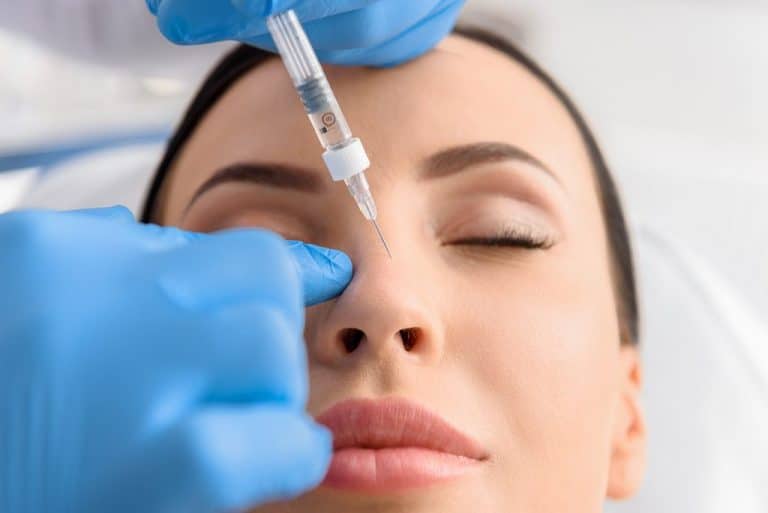The Art of Healing: Strategies for Minimizing and Managing Tummy Tuck Scars
A tummy tuck, or abdominoplasty, is a transformative procedure that reshapes the abdominal area for a smoother, firmer appearance. It’s an option for those seeking to address excess skin and fat as well as restore weakened muscles. By opting for this surgery, individuals can achieve a more contoured profile and enhanced body image. The decision to undergo a tummy tuck should be informed by understanding the process, recovery expectations, and potential outcomes.
This surgical journey requires careful consideration and expert guidance to ensure safety and satisfaction with the results. Here we delve into what candidates can anticipate before taking the decisive step towards their desired physique.
Understanding the Tummy Tuck Procedure
Surgical Steps
A tummy tuck starts with an incision. The surgeon cuts across the hip bone, just above the pubic area. They then remove excess skin and fat from the midsection. The muscles in your abdomen might also be tightened.
Next, they reposition the belly button to suit your new shape. This is crucial for a natural look. Finally, they close all incisions with stitches after ensuring everything looks good.
Types of Tucks
There are three main types of tummy tucks: full, mini, and extended. Each targets different needs.
- A full tummy tuck reshapes both above and below your belly button.
- A mini tummy tuck focuses on the area under your navel.
- An extended version reaches around to improve love handles as well.
Your body type and goals will dictate which one suits you best.
Anesthesia Requirement
General anesthesia is necessary for a safe procedure. It ensures you’re asleep during surgery and don’t feel pain. Doctors give detailed instructions before surgery about how to prepare for anesthesia.
Timeline of Healing for Tummy Tuck Scars
Initial Phase
After a tummy tuck, the initial healing is crucial. This phase typically lasts up to two weeks. During this time, patients may experience swelling and discomfort. It’s important to follow all post-operative instructions from your surgeon.
Patients should expect to see some changes in their scars at this stage. They often start red and raised but will gradually improve.
Scar Maturation
As weeks pass, the scar enters a longer maturation process. Milestones include:
- Reduction in redness.
- Softening of scar tissue.
- Decrease in prominence.
These changes can take several months. Most people notice significant improvements by the third month.
During these months, it’s essential to care for your scar as recommended by your doctor.
Full Maturity
Full maturity of a tummy tuck scar can take up to a year or more. In some cases, it might extend beyond that timeframe depending on individual factors like skin type and overall health.
By one year post-surgery, most scars have faded considerably and flattened out. However, they may never disappear completely.
Regular check-ups with your surgeon can help track progress and address any concerns along the way.
Factors Influencing Tummy Tuck Scar Healing
Genetic Impact
Everyone’s body heals differently. Genetics play a crucial role in how tummy tuck scars heal. Some people have genes that make them more prone to keloids or hypertrophic scars. Others may find their skin heals with minimal scarring.
It is important to understand your family history of scar healing. This knowledge can set realistic expectations for post-surgery results. Your surgeon might also tailor their approach based on this information.
Surgical Technique
The skill and methods used by the surgeon are vital for minimizing scarring. A precise surgical technique will reduce tissue trauma and lead to finer scars.
Surgeons who specialize in tummy tucks often use advanced suturing methods. These techniques aim to promote better healing outcomes. The placement of incisions can also affect how noticeable the scars are after recovery.
Post-Operative Care
Proper care after surgery significantly influences scar healing speed and quality.
Following all post-operative instructions is key:
- Keeping the wound clean prevents infections.
- Avoiding strenuous activity helps tissues heal without additional stress.
Using silicone sheets or gel as recommended by your doctor may improve scar appearance over time as well.
Stages of Tummy Tuck Scar Development
Inflammatory Phase
After a tummy tuck, the body starts to heal. The inflammatory phase begins right after surgery. This is when the area becomes red and swollen. It’s a sign that your body is reacting to the trauma from surgery and starting to repair itself.
The swelling can be uncomfortable, but it’s important for healing. During this time, taking care of the wound is crucial. Keep it clean and follow your doctor’s advice closely.
Proliferative Phase
Next comes the proliferative phase. This phase involves new tissue growth that helps close the wound. Your body creates collagen at this stage, which makes scars stronger.
During these weeks, you might see changes in scar appearance as they start to develop fully. They may look raised or discolored at first.
Remodeling Phase
Finally, there’s the remodeling phase where scars mature over time. This can take up to a year or longer after your surgery. Scars usually soften and fade during this period. It’s not uncommon for them to change color as well—going from red or pink back to a more natural skin tone.
By caring properly for your wounds through all stages, you give yourself the best chance of minimal scarring post-tummy tuck. Remember:
- Follow all post-op instructions carefully.
- Be patient with your body while it heals.
Techniques to Minimize Scarring After Surgery
Wound Care
After a tummy tuck, wound care is crucial for minimizing scarring. Surgeons often provide specific care instructions. It’s vital to follow these guidelines closely. The surgeon may recommend keeping the wound clean and dry, changing dressings, and monitoring for signs of infection.
Proper care can promote healing and reduce scar visibility. For example, using micropore tape can gently support the wound site. This helps prevent stress on the skin that could widen scars.
Scar Management
Silicone sheets or gel play a key role in managing scar tissue after surgery. They keep the area smooth and flat as it heals which prevents thick, raised scars from forming.

Moreover, consistent moisturizing keeps the new skin supple while protecting it from sun damage is essential since UV exposure can darken scars making them more noticeable.
Treatment Options to Improve Scar Appearance
Laser Therapy
Laser therapy can enhance scar appearance. It uses concentrated light to reduce scar redness and promote healing. Multiple sessions may be needed for best results.
Patients report scars become less noticeable after laser therapy. Providers tailor treatments to each person’s needs, considering the type of skin and scar location.
Steroid Injections
Steroid injections help with thick scars. They reduce inflammation and can flatten raised scars over time.
Doctors often recommend a series of injections for optimal improvement. Patients see changes in both the texture and color of their scars following treatment.
Surgical Revision
Surgical revision is considered when other methods fail. It involves removing excess skin around the original scar to create a thinner, less visible line.
This option requires careful consideration due to additional recovery time involved. However, it can significantly improve the area’s appearance if done by an experienced provider.
Managing Expectations for Scar Maturation and Changes
Healing Timeline
After a tummy tuck, the healing process is critical. Scars may take several weeks to show noticeable improvements. In the first few weeks, scars can appear red and raised. Over time, they typically become flatter and lighter in color.
For most patients, it takes about one year for a scar to mature fully. However, some individuals might see changes up to two years post-surgery. It’s essential to understand that each person heals differently.
Individual Variability
Scarring after surgery varies widely among individuals due to factors like skin type and genetics. Some people may heal with thin, barely visible lines while others develop more pronounced scarring.
Consultation with a board-certified surgeon before undergoing a tummy tuck can help set realistic expectations regarding scar outcomes. They will discuss risk factors, such as age or smoking status, which could affect your results.
Patience Required
Patience is vital during the long-term healing period following a tummy tuck procedure. The body needs time for proper wound healing without complications like infection.
It’s important not just to focus on the immediate outcome but also on how things change over months or even years:
- During the first week: Keep activity levels low.
- In subsequent weeks: Follow care instructions meticulously.
Remember that what you do during this time can impact your final scar appearance significantly.
Long-Term Care and Maintenance of Tummy Tuck Scars
UV Protection
After a tummy tuck, protecting scars from the sun is crucial. Direct sunlight can cause scars to darken. It’s best to cover them or use a high-SPF sunscreen.
Wearing protective clothing helps too. This reduces scar visibility over time.
Healthy Lifestyle
Maintaining skin elasticity post-surgery involves a healthy lifestyle. Eating well supports skin health. Foods rich in vitamins C and E are good for your skin.
Staying hydrated is also key. It keeps the skin supple, aiding in better healing.
Scar Monitoring
Regularly checking your scars is important. It helps catch any changes early on. If you notice anything unusual, contact your surgeon right away.
Closing Thoughts
The journey through a tummy tuck procedure extends beyond the operating room, with scar healing and maintenance playing pivotal roles in achieving desired outcomes. We have explored the intricacies of scar maturation, from the initial post-operative phase to long-term care strategies. Emphasizing techniques and treatments to enhance scar appearance underscores our commitment to providing comprehensive guidance for individuals embarking on this transformative journey. As scars evolve, so too should the approach to their care, tailored to individual healing processes and lifestyle factors.
To ensure optimal results and satisfaction, it is crucial for patients to engage with qualified professionals for personalized advice. We encourage those considering or recovering from a tummy tuck to consult with their surgeon and seek expert recommendations on scar management. Let your path to recovery be guided by knowledge and supported by expert care.
Frequently Asked Questions
What exactly is a tummy tuck procedure?
A tummy tuck, or abdominoplasty, is a surgical operation that removes excess skin and fat from the abdomen and tightens the abdominal muscles to create a smoother, firmer profile.
How long does it take for tummy tuck scars to heal?
Tummy tuck scar healing can vary but typically takes 1-2 years for scars to mature fully and achieve their final appearance.
What factors can affect the healing of my tummy tuck scar?
Factors include individual health conditions, age, skin type, surgical technique used, and post-operative care adherence.
Are there different stages in the development of a tummy tuck scar?
Yes. Tummy tuck scars go through several stages including initial inflammation, collagen production (proliferation), and finally maturation where they fade over time.
Can I minimize scarring after my surgery?
Minimizing scarring involves proper wound care following surgery as well as employing recommended techniques such as silicone sheets or gel.
What treatments are available to improve the appearance of my scar post-tummy-tuck?
Options range from topical treatments like silicone gels to procedures like laser therapy or microneedling supervised by medical professionals.
Should I expect changes in my scar over time after a tummy-tuck?
Yes. Expect your scar’s coloration and texture to change gradually as it matures over months or even years post-surgery.






